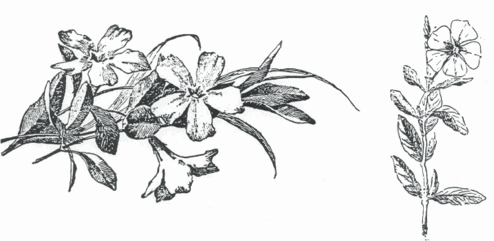Family Description
The Dogbane family consists of 200 genera and 2000 species of dicotyledonous trees, shrubs or, rarely, herbaceous perennials with cosmopolitan distribution but centered in the tropics. Many species have milky sap. Leaves are opposite, simple, without stipules, and entire. Flowers are 5-merous with regular symmetry and the petals fused into a tube. Stamens are attached to the throat of the tube. Flowers are borne singly or in cymes. Colors are of any shade with blue and pink common. The fruit is a pair of follicles, a pair of berries or a capsule.
-
Diagnostic features include:
- opposite, entire leaves
- milky sap
- 5-merous tubular flowers and the usual pair of follicles
Plants of this family are warm weather plants doing best in sunny or bright locations. Many species have considerable drought tolerance. Propagation is by division, cuttings or seeds. Germination is best with temperatures above 70°F. Pests are rare. Many members of this genus are poisonous (Nerium especially). Catharanthus is the source of important drugs.
Important genera in the garden include: Adenium, Allamanda, Alstonia, Amsonia, Apocynum, Carissa, Catharanthus, Mandevilla, Nerium, Plumeria, Rauvolfia, Strophanthus, Thenardia, Thevetia, Vinca and Wrightia.

Vinca minor (left), Catharanthus roseus (right).
Representative Species
click thumbnail to enlarge |
|||||||
| * | Catharanthus roseus | Periwinkle |
|
||||
| Vinca minor | Dwarf or Common Vinca |
|
|||||
| * | Vinca major | Large Vinca or Trailing Periwinkle |
|

